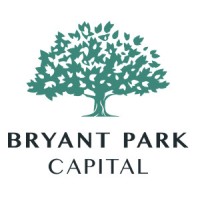Recap of IMN’s Inaugural International Litigation Finance Forum

IMN’s inaugural International Litigation Finance Forum brought together a crowd of international thought-leaders from across the industry, showcasing perspectives from funders, lawyers, insurers and more across a packed day of content.
Following IMN’s successful New York conference, the London event demonstrated the growing reach and maturity of litigation funding, as topics covered everything from recent industry developments to the nuances of international arbitration and dispute resolution. At the core of the day’s discussion, the central themes of regulation, ESG and insurance were present throughout each session, with unique insights being shared by panelists.
The day began with a panel focused on the current state of litigation funding in Europe, where the topic of regulation took center-stage. Whilst most speakers agreed that the proposed reforms in the recently approved Voss Report were a step in the wrong direction for the industry, Deminor’s Erik Bomans offered a contrarian take on regulation, and highlighted that the very existence of this debate around regulation is a positive sign of the industry being taken seriously.
During the second panel on jurisdictional differences in Europe, this view was echoed by Clémence Lemétais of UGGC Avocats, who stated that it was promising that the EU parliament is raising the visibility of the industry, but that the draft resolution ‘shows a lack of knowledge’ about the industry itself. This was further reinforced in terms of individual country requirements by Koen Rutten of Finch Dispute Resolution, who argued that regulation has to be based on facts, and has to address a problem, which he does not see in the Nethlerlands.
A fireside chat with Rocco Pirozzolo of Harbour Underwriting gave the audience a detailed overview of the impact and evolving nature of ATE insurance on litigation funding. During this interview, Mr Pirozzolo highlighted the difference in approaches between insurers and funders when assessing cases, but further highlighted the need for collaboration between the two to deliver wider access to justice.
Two panels completed a busy morning of discussion, with the first providing insight into the evolving nature of funders’ approach to capitalization, and the second analyzing the best practice for those seeking funding. LCM’s Patrick Moloney honed in on the evolution of the industry having come from a place of being perceived as ‘the dark arts and then loan sharks’ to now being in a position where funders like LCM garner investment from public listing. Later, Ben Moss of Orchard Group, offered a detailed overview of how requests for funding should be best structured and highlighted the ‘holy trinity’ of ‘merits, budget and quantum’.
The afternoon saw a broadening of the range of discussions, kicking off with Tom Goodhead of Pogust Goodhead providing an insightful presentation on group litigation in the UK and the need for future reforms to enable growth. Another two panels brought a wealth of insights, with the topics of co-investing, diversification and the secondary market in the first, being followed by a wide-ranging discussion of the different types and applications of litigation insurance.
After a breakout meeting explored the best practices in talent development and growth for women in litigation finance, a trio of panels capped off the day’s agenda. In a wide-ranging discussion of innovative deal terms and structures, panelists from the likes of Brown Rudnick, Litigation Funding Advisers and Stifel, provided insight into everything from the effect of insurance on pricing to the increasingly technical and data-drive process of due-diligence.
Taking a more global approach for the penultimate panel, Alaco’s Nikos Asimakopoulos, skillfully guided the audience through a global look at enforcements and international arbitration. The panel of legal experts discussed an extensive range of topics, with Tatiana Sainati of Wiley Rein, spotlighting ESG as a primary driver in the increase in transnational disputes and particularly in the EU where ESG initiatives have taken hold.
In the final panel of the day, the topic focused in on the use of litigation funding by corporates and institutional investors. In an illuminating exchange, Woodsford’s Steven Friel played down claims by other funders that CFOs and other corporate executives primarily look to litigation funding for its ability to shift legal costs off the balance book. Instead, Friel and other panelists highlighted the need for funders to bring more than just capital to the table, and that true value could be brought through a funder’s insight, as well as its ability to manage the litigation process and reduce the non-financial resource burden on corporates.
Overall, IMN’s inaugural UK event displayed the incredible depth of the litigation funding industry and gave attendees a wealth of insights that will no doubt generate further discussion and debate among leaders. In a day of packed content, IMN’s roster of speakers and panelists provided both high-level overviews and detailed looks at the nuances of certain industry sub-sectors.
Editor’s Note: An earlier version of this article erroneously attributed the detailed overview of how funding requests should be structured to Rosemary Ioannou of Fortress Investment Group. The remark was made by Ben Moss of Orchard Group. We regret the error.


